Kowa curiously put a technological first into a budget camera.
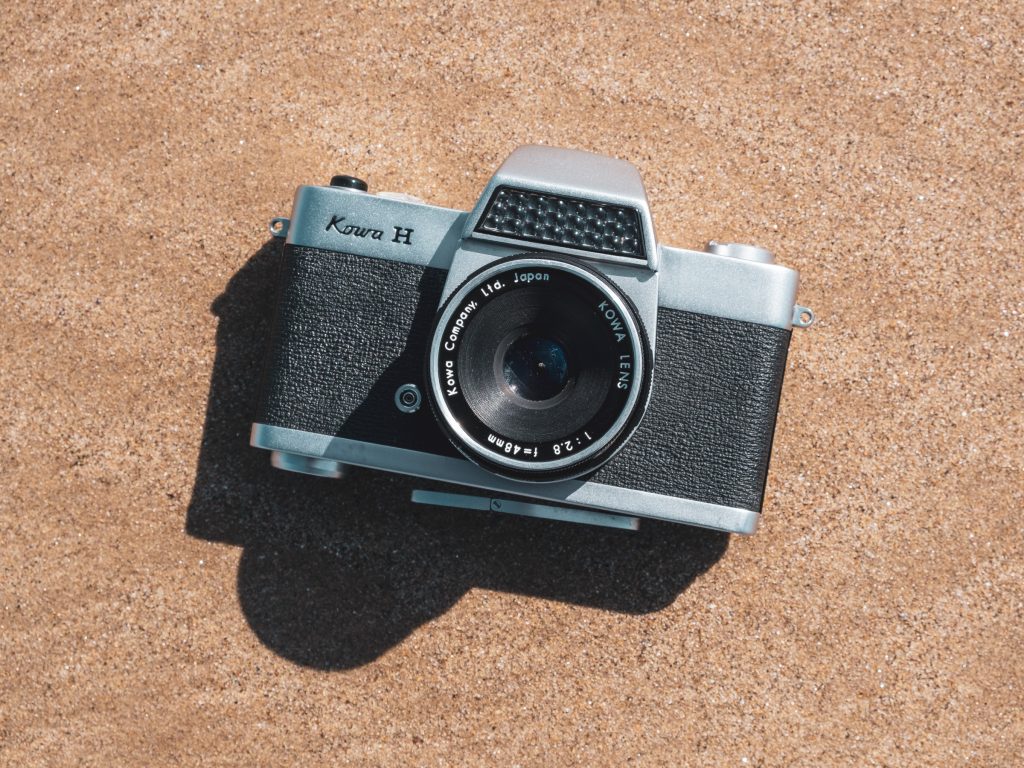
This is my third Kowa H. The previous two were DOA. This one has a decidedly ropey film advance which caused me to swear a few times, but I think I have worked out its idiosyncrasies and bested it now. Kowabunga to that.
It is fair to say that due to build quality, the fixed lens leaf shuttered Kowa H will never be regarded as a classic, but it was nevertheless at the cutting edge of exposure automation and deserves its landmark camera status.
Why is the Kowa H a landmark camera?
Japan’s first SLR with fully automatic exposure.
The User Experience
The Look
I would call the Kowa H cheap and cheerful looking. It’s quite obvious at just a glance that this isn’t a premium product. There’s nothing luxurious about the metal and leatherette finish. The name of the camera looks crudely stamped in. There’s a generous amount of plastic for an early 1960’s camera. It isn’t a bad looking camera though. The top plate is quite flush, with a recessed film rewind and a shutter release with a generous circumference and low profile. The prism housing is dominated by a selenium cell meter, occupying an area where you would expect to see the name of the camera brand. The film advance lever is a foldable type, placed on the base of the camera; more on that later. The placement of this lever pushes the tripod mount out to the edge of the camera. Very odd.
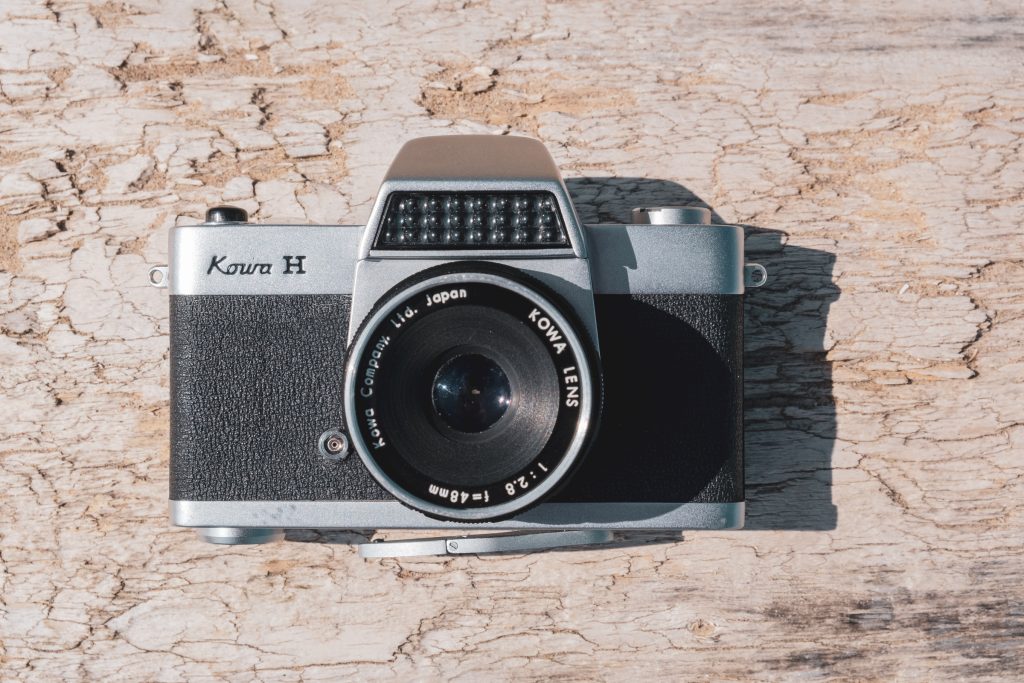
The Feel
The Kowa H sounds a bit hollow, particularly when turning the lens aperture ring. Maybe its the amount of plastic on the lens barrel that gives me this feeling? The focusing ring is slightly loose but turns firmly. The leatherette feels thin and horrible. The film advance lever flaps loosely and gets in the way when you cradle the camera in your left hand. It also operates in a counter-intuitive way. You push the lever away from your body with your left hand. The film rewind feels like it could break any second. The shutter though is firm with a reassuring degree of resistance.
Well actually, this camera mostly has good usability for its intentions; to be a fully automatic exposure camera.
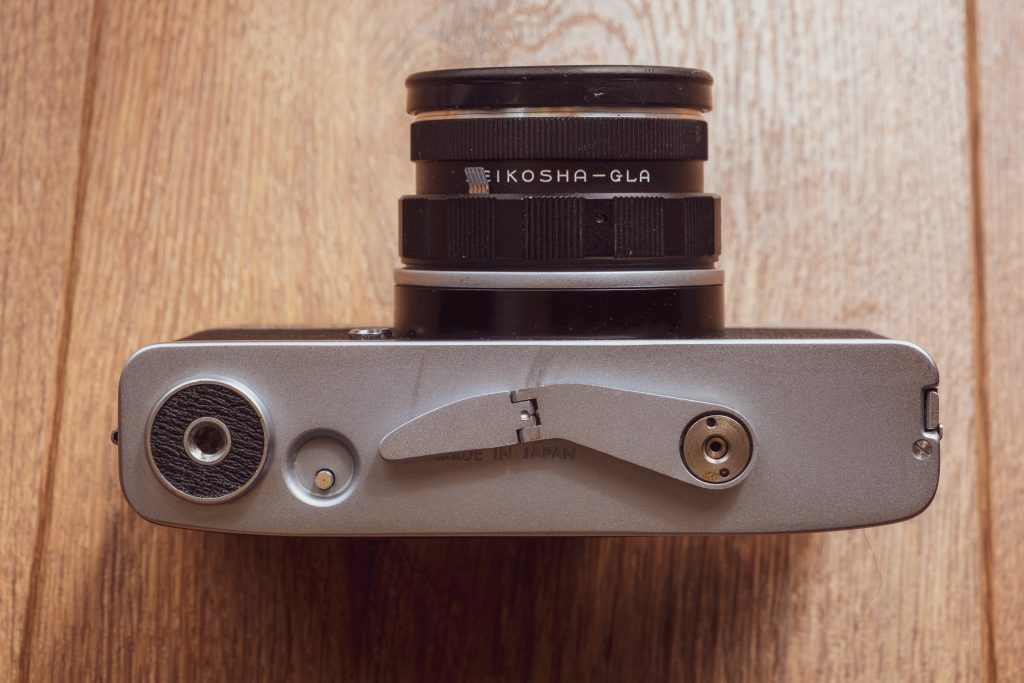
In Use
Well actually, this camera mostly has good usability for its intentions; to be a fully automatic exposure camera. It is easy to set and use.
I understand why the film advance is on the bottom of the camera. It wasn’t a particularly unusual placement in the early sixties. The top plate area vacated by the film advance is occupied by the ISO indicator and exposure meter window.
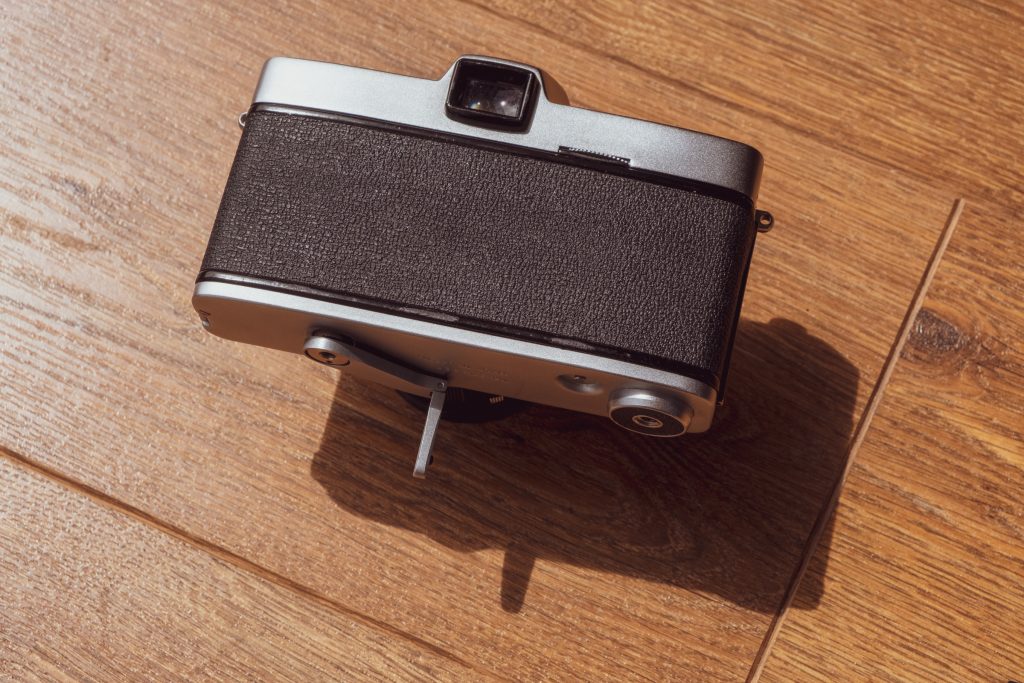
This camera really is easy to operate. A rather rough feeling metal thumbwheel on the rear changes the ISO between 25 and 400. The change is indicated in the exposure meter window. With the lens aperture ring set to the red A, a needle in the exposure meter window indicates a fixed set of aperture and shutter speeds it has chosen. There are seven sets of options.
| Shutter speed | Aperture |
|---|---|
| 1/250 | f/22 |
| 1/190 | f/16 |
| 1/125 | f/11 |
| 1/95 | f/8 |
| 1/60 | f/5.6 |
| 1/45 | f/4 |
| 1/30 | f/2.8 |
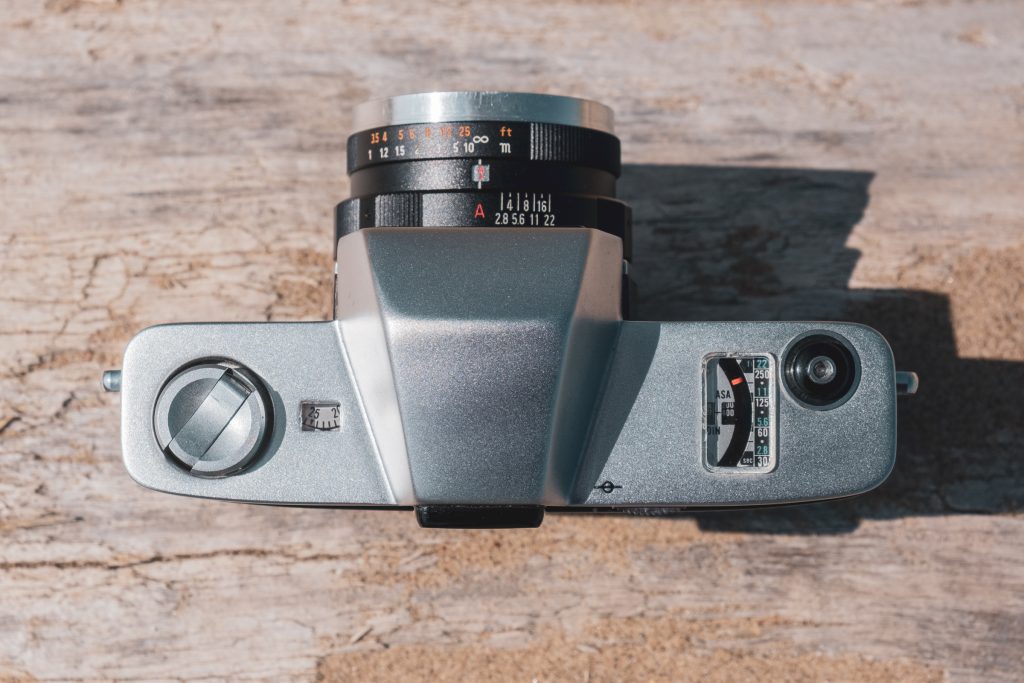
The viewfinder is really rather good for a budget camera. It is bright, with ground glass and a split image focusing aid. However, the exposure indicator system in the viewfinder is completely confusing, and probably best ignored.
Top left in the viewfinder is a static red signal mark. A key-type indicator, also on the left of the viewfinder, shifts its position depending on the ISO speed selected.
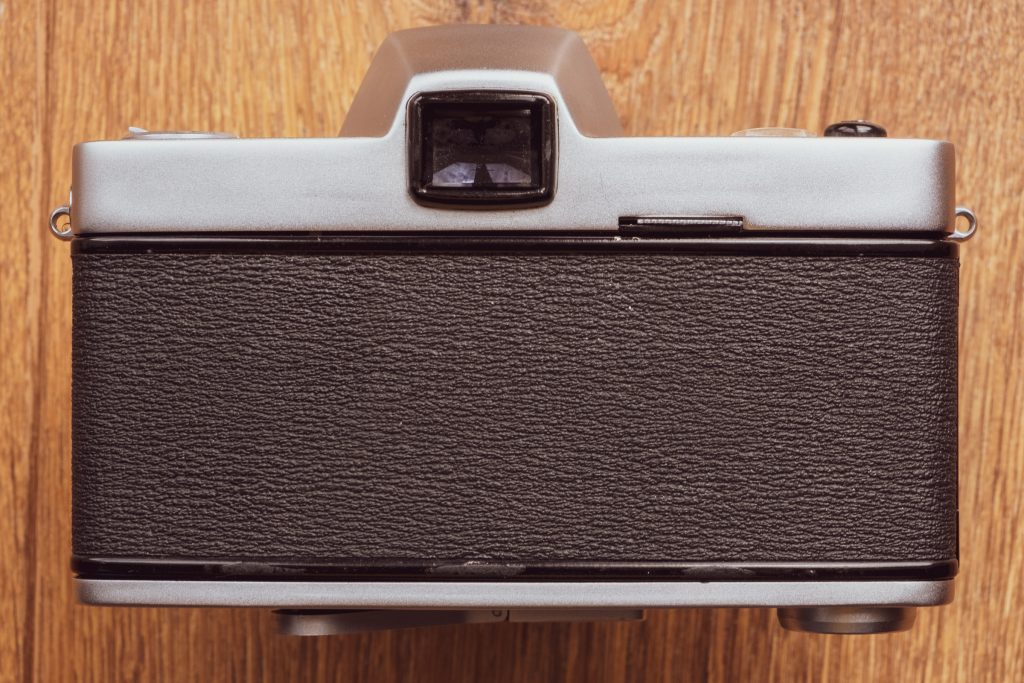
Nice view, shame about the confusion
Then, a swinging exposure meter needle is suppose to indicate exposure, but it tells you nothing. The problem is, depending on the position of the key-type indicator, the needle operates between the red signal mark and the key type indicator (which makes sense), or it is below the key type indicator (which makes no sense at all). Additionally, there is no scale or correct exposure mark to provide any assurance. The whole system is flawed and should have been omitted, as it provides no usable information.
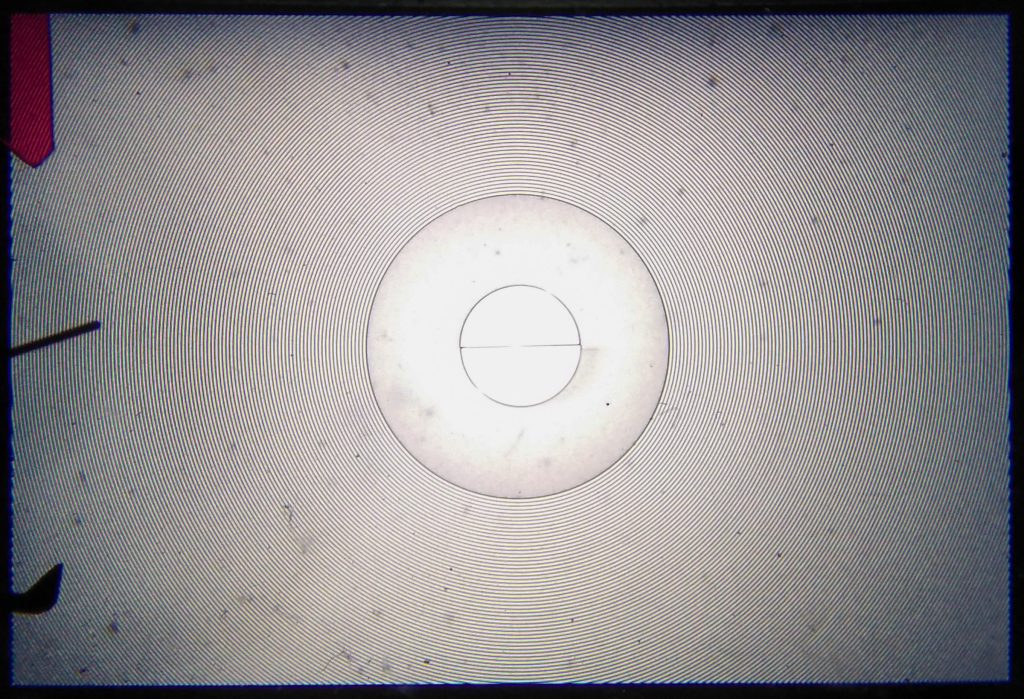
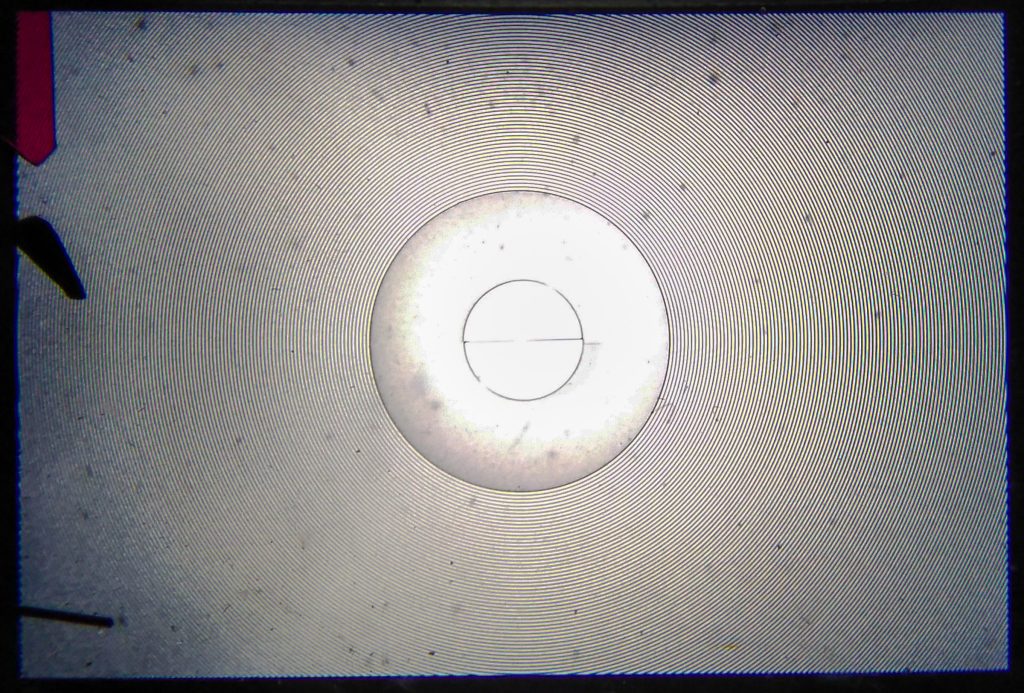
A shutter sound like no other
The shutter release has a firm springiness that unleashes a quite unique sounding shutter, no doubt due to the convoluted exposure cycle of a leaf shutter SLR. I rather like the sound of the slap followed by a ring!
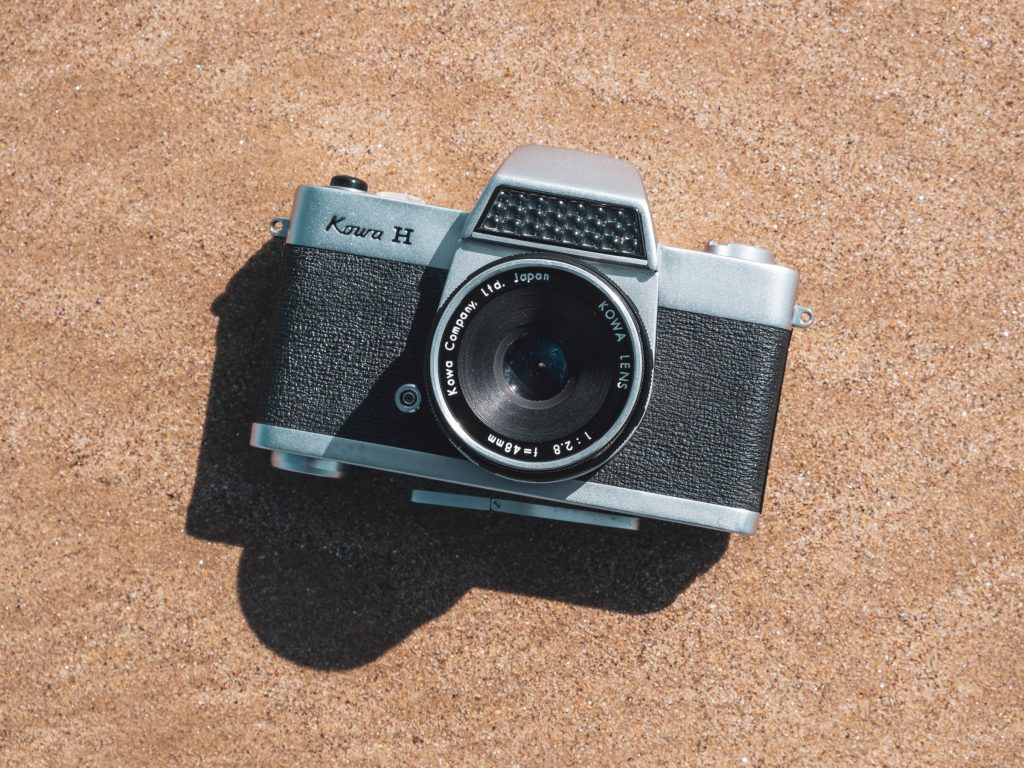
The 48mm f/2.8 lens is surprisingly decent. Here are three from the Kowa H taken with TMAX 400 and somewhat overcooked at my first attempt at making and processing with caffenol.
Photographs taken with the Kowa H



FURTHER READING:
Mike Butkus’ manual site
Kowa H – Saved from the garbage can
The Curious Kowa
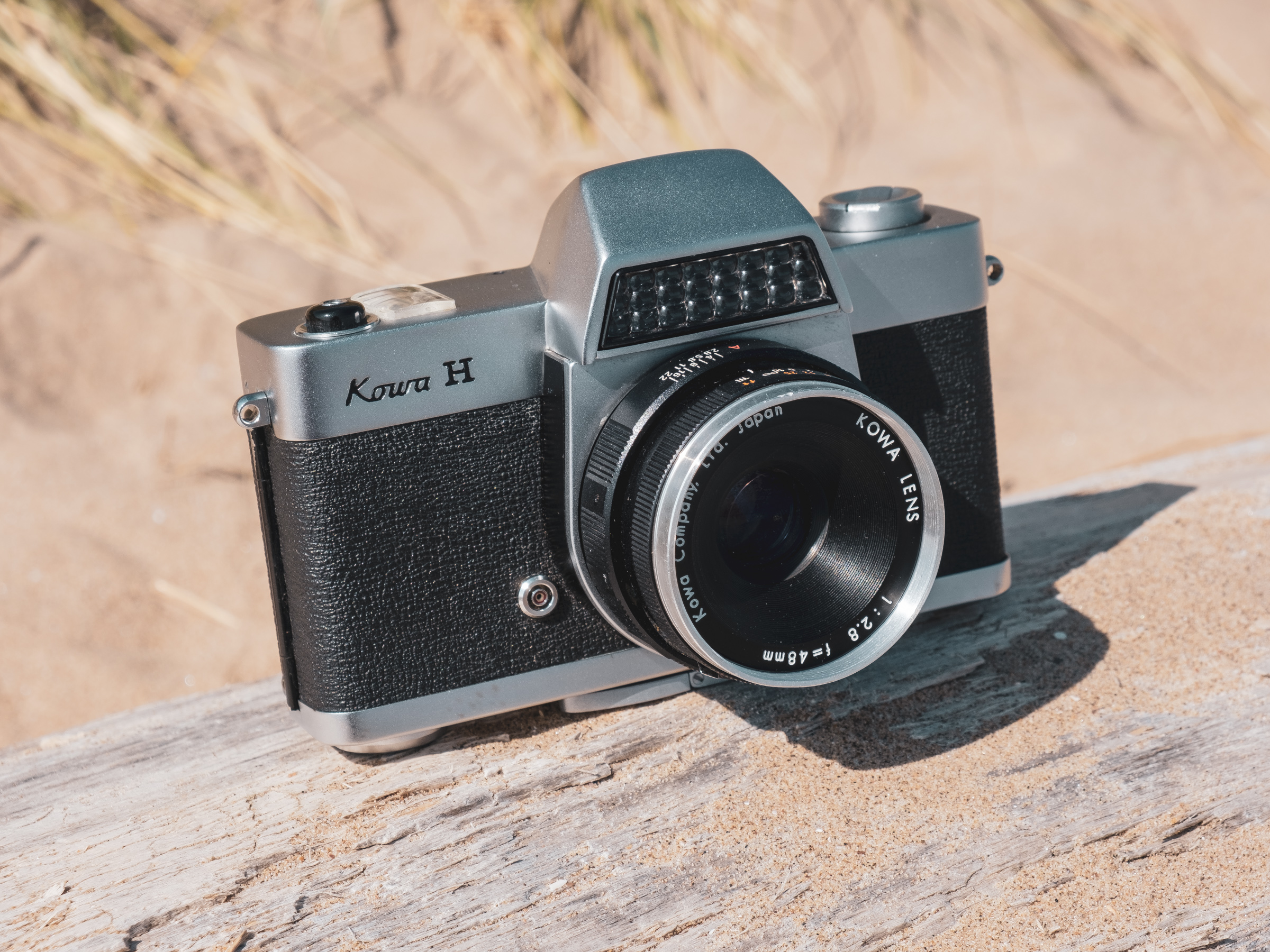
It looks like a nice camera with its rounded corners and a minimalistic aluminium Topdeck. The meterscale also add to the Spaceage look, that i’m into it theses days.
It is certainly a cool looking camera Oli.
M first 35mm camera given to me by my mother in 1967. She got it used from a priest. I still have it these many years later, but alas, the rewind lever is nonfunctional.
Hi John. Thanks for commenting. Yes, film transport does seem to have been this camera’s weakest link!
According to the Kowa H manual, the camera’s exposure program also includes the following settings: 1/45 sec. @ f/4, 1/95 sec. @ f/8, and 1/190 sec. @ f/16.
Hello Dave. I am looking at a copy of the Kowa H instructions and cannot see these additional settings. It would be a great help if you could tell me where to find this information. Thank you. 🙂
This is correct. The additional settings are indicated by dots in the meter display due to a lack of space. All settings can be seen in a linear exposure chart in the manual. Each setting corresponds to a 1.5EV combined exposure change.
Thanks Paul. I can see the information in the manual now. I will add those aperture and shutter speed combinations to the table.
What size filter thread for the lens
I no longer have the camera, but I believe it is 49mm.
Hi,
I am trying to repair a Kowa E at present, not an easy camera to work on. Yours is the first H I have seen, lots of E’s & SE’s all with more or less the same problem. The winder looks looks like an afterthought , although I do have a Kowa 35N which is very novel and still works flawlessly. Thanks for the info.
You are welcome.
It was my first SLR camera, bought I. 1965 from Green’s Cameras in Trafalgar Square, London. Gave good service but was limited by a fixed lens and I soon moved to a Minolta SRT 101, or was it 303?, before changing to an Asahj Spotmatic in early 1970’s. The last was a topnotch instrument.
Thanks for your early camera owning history Manou. I can see the Kowa being a good starter SLR.